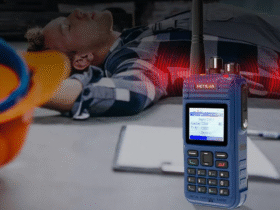It’s hard to overstate the importance of fire safety. And it goes for everybody – doesn’t matter if you’re a renter or an owner. But it’s not enough to know the regulations and follow them perfectly (although that’s definitely a great start), there’s only so much lawmakers and a piece of paper can tell you. No, you need more awareness than that. Things break, and malfunction. Let’s explore how you can identify and mitigate fire risks in a way that’s straightforward and approachable.
Understanding Fire Risks
Fires can start in numerous ways, often in places we least expect. Common culprits include faulty electrical wiring, unattended candles, and kitchen mishaps. But understanding these risks is the first step in preventing them.
Heart of the Home – and the Fire Risks
The kitchen is where life happens – always full of activity. This is where delicious meals are prepared but also where many fires begin. Cooking equipment is the leading cause of home fires. Always stay in the kitchen while frying, grilling, or boiling food, and ensure flammable items like dish towels and paper towels are kept far from heat sources.
Hidden Dangers
Electrical fires often start in the walls, making them hard to detect until it’s too late. Regularly check your home’s wiring, especially in older homes. Look for warning signs like flickering lights, warm outlets, or breakers that frequently trip. Consider hiring a professional electrician to perform an inspection if you notice any of these issues.
Warmth with Caution
During colder months, heating equipment becomes a necessity. Space heaters, fireplaces, and wood stoves need extra attention. Keep anything that can burn at least three feet away from heating equipment and never leave them unattended. Make sure fireplaces have a sturdy screen to stop sparks from flying into the room.
Preventive Measures
Once you know where potential fire risks lie, taking preventive action is the next step. It’s not just about having a plan but making sure everyone in the household knows what to do.
Your Detectives
Wired or wireless fire alarms are crucial for early detection. Install them on every level of your home, especially near sleeping areas. Test them monthly and change the batteries at least once a year. A smoke alarm with a ten-year battery life can provide extra peace of mind.
Be Prepared
Having a fire extinguisher in your home can make a big difference in a small fire. Keep them accessible in key areas like the kitchen and garage. Make sure everyone knows how to use them; remember the PASS technique: Pull the pin, Aim at the base, Squeeze the handle, and Sweep side to side.
Practice Makes Perfect
You should make sure there’s an emergency plan in place and that everybody knows it. Make it simple and practise it every now and then. Identify two ways to exit each room and choose a meeting spot outside the house. Conduct fire drills twice a year so everyone feels confident and ready.
Stay Vigilant, Stay Safe
There’s no need to worry about it all the time, but some common sense and caution will be huge factors in keeping your loved ones and your property safe. Remember, vigilance and preparation are key.
Read Also:- FireLog Solution















Leave a Reply